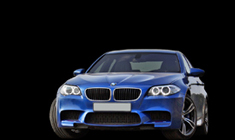
The Team-BHP Guide to BASIC Car Audio
The first rule of car audio is to listen. Differences in taste and car acoustics combined with myriad combinations of head units, speakers and amplifiers make it almost impossible to design the ideal system for everyone. While the perfect system for everybody does not exist, with a little effort it may be possible to find the perfect system for you. Remember: it is your money, your car, your music and your ears. Listen before deciding.
When selecting a system, try to choose a large international brand that is widely available and supported by a good service network, like Alpine, Blaupunkt, JBL, JVC, Kenwood, Pioneer and Sony. We recommend buying only from official distributors that offer a manufacturer’s warranty.
- The head unit: Today most head units (HUs) play only CDs – rightly so, since tapes are long past their prime – but there are still a few cassette units available and even some cassette/CD units. Because CD-only HUs are the most common, there is a wider available range of units of differing quality and cost. We recommend buying an HU that is MP3 compatible. Most HUs come with built-in amplifiers, but you should not believe the advertised power rating: it is usually inflated. These amplifiers normally only produce about 8-12 watts RMS, <0.1% distortion and 20 Hz-20 kHz. While this kind of power is not earth shattering, it should be enough for most uses. HU prices start at Rs.6 000.
- Amplifiers: Amps are used for two purposes: to reduce the load on the HU power supply so that it performs better, and to increase the sound levels of the car audio system. In most cases 35-40 watts RMS per channel is more than enough, but advertised amplifier specs are often optimistic. You should check to see that amplifier distortion figures are less than (<) 0.1%, 20 Hz-20 kHz and that all channels are driven in parallel. Avoid amps that do not meet these specifications. Prices start at Rs.5 000 for a 4-channel amplifier and at Rs.3 000 for two channels.
- Speakers: Speakers contain the fewest parts because they simply convert electrical energy to mechanical – that is why those cones move so much. Many audiophiles believe that speakers have the most influence on overall sound quality.
There are two basic speaker types: coaxials and components. In coaxial speakers the low frequency and high frequency units are molded into a single physical frame. In component speakers the low and high frequency units are separate and include a third part, called the crossover. Component speaker systems are more expensive but offer superior sound quality. To accommodate limited budgets people often use component speakers in the front of the car and coaxial speakers in the rear. - Wires: The quality of wiring is more important than most people think. Choose only wires manufactured by well-recognized, international brands.
Power wires connect the battery to the HU and amplifiers and provide an electrical ground to the body of the car. Cheap power wires may affect sound dynamics and cause other noticeable disturbances, like headlight dimming at high volumes. Good 8-gauge wire will do unless your amplifiers are particularly powerful.
Interconnects connect the HU to the amplifier. Since most amplifiers are installed in the trunk and most HUs in the dash, these wires typically have to run the length of the car. Because the signal generated by the HU is not powerful, these wires are susceptible to noise. By choosing a reliable set of interconnects you will ensure that your speakers play only music, not static or alternator whine.
Speaker wires connect the amplifier to the speakers. In systems that don’t use a separate amplifier, they connect the HU’s built-in amp to the speakers. - Installation: We strongly recommended that you use only certified professionals to install your audio system. Do not use the services of untrained installers who can cause serious damage to a car and audio system.
Click Here for the Team-BHP guide to Advanced Car Audio.
Recommended site for newbies:












